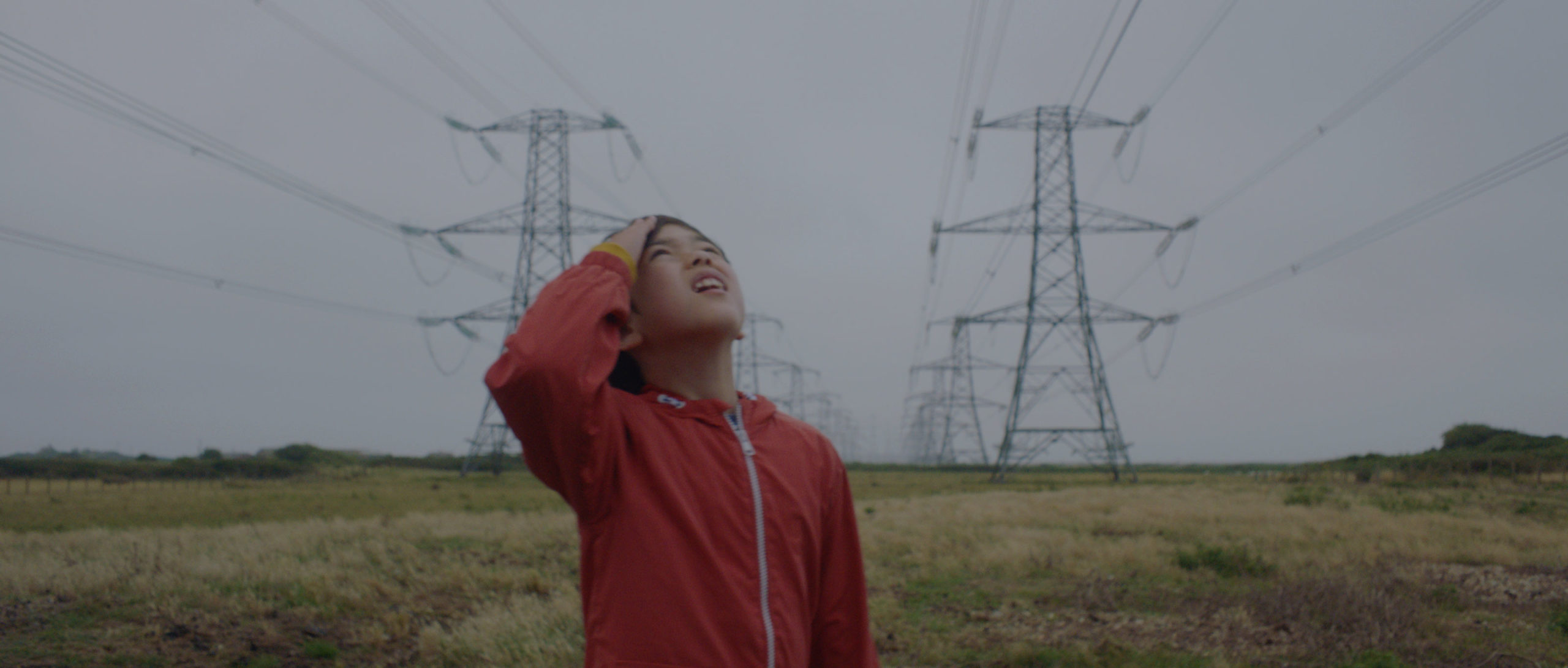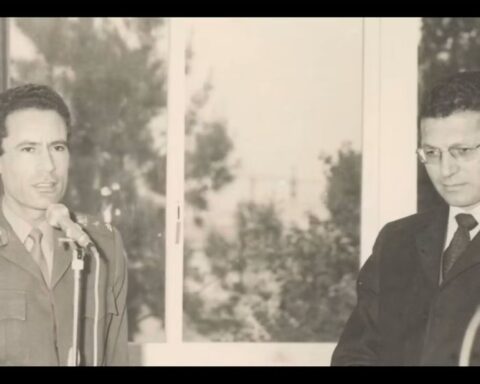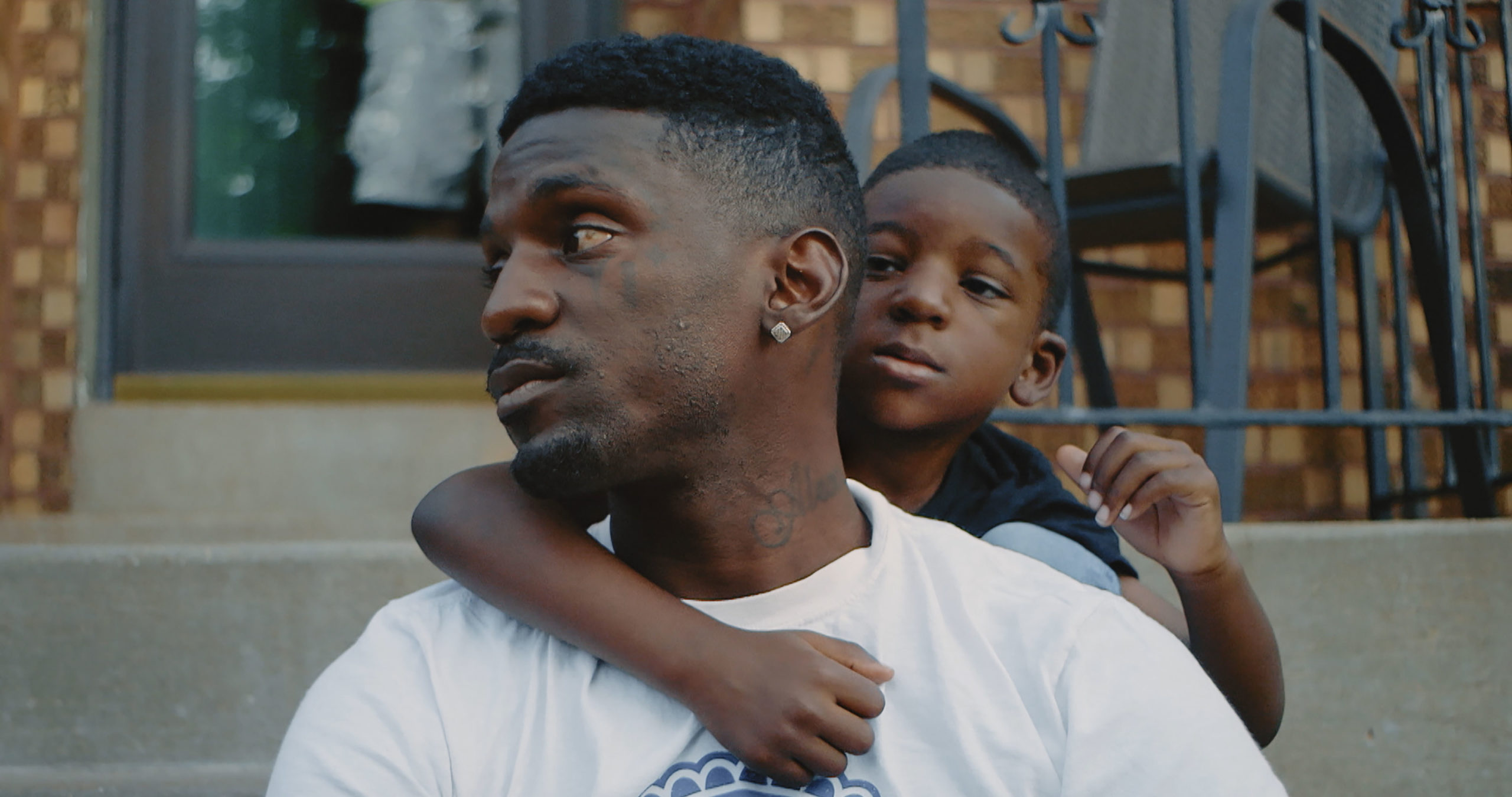Naoki Higashida’s ground-breaking book The Reason I Jump receives a documentary treatment that is equally revelatory. The Reason I Jump debuts in the World Documentary Competition at this year’s Sundance Film Festival and, like Higashida’s landmark book, it provides a valuable window into the experiences of non-speaking autistic people. The film is directed with sensitivity and ingenuity by Jerry Rothwell (How to Change the World, Sour Grapes) and it uses Higashida’s book (translated into English by Cloud Atlas author David Mitchell) as the jumping off point for a global study of the diversity of experiences for non-speaking autistic people. Rothwell introduces audiences to a quintet of characters and the range of supports they receive as society gradually understands a condition that is often impenetrable to the average mind. It’s a powerful and eye-opening film that furthers a much-needed conversation.
The Reason I Jump offers a first page-to-screen journey for Rothwell at a time when documentary “adaptations” of literature are becoming more common. “For me, the best film adaptations are a kind of riff on a book,” observes Rothwell, speaking with POV by telephone ahead of the film’s Sundance premiere. Rothwell explains that he couldn’t take the conventional docu-adaptation route of following a novel’s genesis with the writer. “The first time I had this idea, I thought that the obvious film would explore Naoki’s process of writing the book. It would be a story of him finding a voice and it would have some biographical elements.”
Rothwell says that practical constraints ruled out that option altogether. “Naoki definitely didn’t want to be in the film,” explains Rothwell, although Higashida communicated with the director during production and gave the final film his seal of approval. Without Higashida’s active involvement, though, bringing The Reason I Jump to the screen became a larger project of engaging with the text.
Unlike Higashida’s book, which answers a series of questions in the first-person to illuminate the perspective and thought-process of a non-speaking autistic person, the film explores additional means of expression by people with similar conditions. “The book has characters, but they’re not really continuous characters in the form of the story,” observes Rothwell. “So, for me, it was a process of asking how the book becomes a key to unlocking something.”
Translating Naoki’s Voice
For Mitchell,who is from the UK and based in Ireland, the process of translating Higashida’s text from its original Japanese was also a unique experience. “My wife [Keiko Yoshida] and I were merely translating from one language to another and that comes with it a responsibility to clearly not put anything in there or take anything away from the original,” says the Booker-prize nominated author by telephone. Mitchell, who describes his encounter with The Reason I Jump as crucial to understanding the experiences of his own son, who has autism, adds that translating the book in language was unlike translating pages for the screen because the process couldn’t work as a riff. “Our modus operandus was to imagine if Naoki happened to be a 13-year-old English speaker,” says Mitchell. “How would he sound? How can we represent his Japanese in English, while being ourselves as transparent as we possibly can be?”
Mitchell adds that transparency was key to developing Naoki’s voice for the world to experience. For a novelist known for captivating readers through his intricate and poetic use of language, Mitchell admits that translating the book was a balancing act of recognizing that no translation is completely pure while understanding the nuances between Higashida’s voice and his own. “I make a living from my imagination, so it was therefore crucial that it was truly all Naoki and as little of me as it possibly could be,” says Mitchell. “The whole point is that it’s a book about someone who the world does not believe has a voice, but he is expressing himself.”
In fact, Mitchell says that while his translation resisted novelistic language and avoided smoothing the prose, his first proofreader did exactly that. “There were many small repetitions or small slight clumsinesses in the text that you might expect from a 13-year-old user of a language, especially a non-conversant ‘texticator,’” explains Mitchell. (The author coined the word “texticator” in a 2017 essay for The Guardian in reference to non-verbal people who communicate via text.)
Mitchell says that the proofreader cleaned Naoki’s translated prose as he would the text of a book originally authored by himself. “Naoki uses expressions such as, ‘I really, really like it when this happens.’ I would reproduce those two reallys, whereas a proofreader doing his or her job would smooth that out, especially if it isn’t in speech marks.” Translating The Reason I Jump is itself an act of understanding non-verbal communication and imbuing one’s work with sensitivity to autistic experiences. “I think there were at least three translations,” observes Mitchell on the full process from page to screen. “From non conversant perception into texticated Japanese and from Japanese into English and then from English into a visual medium.”
A Neurodiverse Production
The production demonstrates its sensitivity to Higashida’s story and the experiences of the film’s subjects. Rothwell says that he made The Reason I Jump with input from the British Autistic Society from the earliest stages through to preview screenings. “It was probably the most neuro-diverse production I’ve worked on,” says Rothwell. “That fed into we learned about and thought about autism. Our sound designer [Nick Ryan] is synesthetic and brought that experience to understanding the relationship between sound and images.” A highlight of the film’s Sundance premiere will be Ryan’s immersive Atmos sound design featuring 360° recordings from each film location. These sounds let audiences explore how people with autism experience the world, translating in sounds and images what Higashida conveys in words.
“That’s really honouring the spirit of the book,” remarks Mitchell. “One of the book’s core messages is that should we think of autism not as a disability, but more as an asset, as a bank of alternative ways to perceive this experience of being alive. For Jerry to have incorporated that way of thinking into the production of the film is remarkable.” The events at Sundance will include a sensory-friendly screening while Mitchell and Rothwell say that there’s been special interest from the British Film Institute for participation. (The film is presented by the British Film Institute (BFI) and is an Ideas Room, Metfilm, Vulcan Productions, and Runaway Fridge Production with Jody Allen [Far From Heaven, Racing Extinction] as executive producer.)
Casting the Film
The Reason I Jump further captures the spirit of the book by sharing the experiences additional characters who share Higashida’s condition. The film focuses on five characters: Joss in London, Ben and Emma in Arlington, Viriginia; visual artist Amrit in Noida, India, and Jestina in Freetown, Sierra Leone. Jim Fujiwara offers a visual surrogate for Higashida as Rothwell films the young boy wandering around a concrete parkette while observing the world. Rothwell says that this collective portrait of diverse experiences of people with autism stems recognizing how the author wrestled with the question of what it means to be human.
“When I went to meet with Naoki, I asked him where he was when he was writing the book,” explains Rothwell, referring to Higashida’s headspace. “He said he wasn’t sure, at that stage of life, whether he was a human being, which is a dramatic thing to say. It feels to me that the book is a sort of reclaiming of his humanity.”
The idea to reconfigure one’s perception of normalcy drives the film’s search for humanity. The Reason I Jump emphasizes Higashida’s belief that his idea of normal is his idea of normal and that he wouldn’t have it any other way. Rothwell says that philosophy shaped the film and the selection of characters, particularly Amrit whose work as a visual artist complements Higashida’s literary expression. Similarly, Ben and Emma learn to communicate through a letter board (comparable to that of Jean-Dominique Bauby with The Diving Bell and Butterfly) as the film explores the various of forms of communication that connect non-verbal texticators with their verbal peers. Rothwell adds that the global scope lets the stories convey the different sensory experiences people face, some of which may be overwhelming, as well as the stigma they encounter in societies that are less progressive in their response to understanding autism.
The specificity of experience that Higashida expresses is one reason that Mitchell argues The Reason I Jump has been translated into 30 languages and is a global bestseller. (Another element that befits the film’s scope.) Similarly, Mitchell observes that the book is a “meta text” about autism. “It invites all neurotypicals to rethink what they think they know about autism in whatever cultural context they’re in,” explains the author.
This point becomes powerfully clear when the film visits Jestina in Sierra Leone. Little social assistance is available and education about autism is equally scarce. Her mother takes to radio shows to raise awareness and challenge pre-existing biases that frame her daughter as less than human. “I’m really glad that the film goes beyond the usual suspects of documentary context and the middle class world,” says Mitchell. “Real traction only began to happen with how autism was seen thanks to wealthier North Americans whose kids had diagnoses of autism. Until then, autism as a concept was either fringe or it involved misdiagnoses of insanity. Developing world autism has been really invisible. It’s been doubly invisible.”
The Role of Caregivers
Jestina’s story in particular highlights the role of caregivers, although all of the characters in The Reason I Jump thrive with the aid of supportive parents, social workers, or peers. Mitchell highlights the role of care providers in his introduction to the translation, noting that one often turns to books for answers after learning of a child’s diagnosis only to encounter stale literature that often perpetuate more misconceptions than they correct. “If someone can speak, it’s much easier to tell only the story of the parents and carers,” observes Mitchell. “The danger is that the parent/carer has a dramatic arc about the birth of a child, then discovery and diagnosis. That can very easily fall into something where autism is seen as a tragedy for the parent, but the parents’ journey is fundamental. Parents and carers are critical links for a non-verbal autistic person.”
Mitchell says that it’s crucial to represent the stories side by side. On one hand, the parents and carers are the characters with whom audience members might easily identify. As surrogates for the viewer, they offer bridges for empathy and understanding. “Parents and carers are necessarily the chief interlocutors between the autistic person and the world,” says Mitchell. “We love our kids like most parents do, and we want the best for them. The commitment is maybe more than we bargained for, more than our friends with non-autistic kids are clocking up, but nonetheless, you just do it. It’s parenting on steroids. The lows are lower and the highs are higher because of the effort involved.”
By highlighting the relationship between the young people with autism and their parents, the film illustrates a sentiment that Higashida expresses in the book. “Naoki says the most unbearable thing about autism is the consciousness that we have a problem, that we are pain, that we all stopped our parents from getting on with easy sunlit plans for parenting,” says Mitchell. “It’s the constant effort, the constant ingenuity that our kids are having to deploy just to get from Monday through to Friday and then Friday into Monday again. Recognizing that was very, very helpful.”
Heavy Load Trailer from Met Film Production on Vimeo.
Revisiting Autism After Heavy Load
Rothwell’s work with The Reason I Jump returns him to the experiences of people with autism following his film Heavy Load. The 2008 doc chronicles the members of the British punk band Heavy Load, which features three members with learning disabilities. Guitarist Jimmy Nichols is autistic. “Ten years ago, autism was grouped with learning disabilities,” says Rothwell, “especially in the way social care was organized, how people thought about it, especially non non-speaking autistic people, and how non-conversant autistic people were treated.”
The Reason I Jump reflects the cognitive shift that’s happened in the decade since Heavy Load. Rothwell, for example, says that his approach with the new film eschewed conventional talking-heads interview styles in favour of relaxed conversations. Spending time with the characters and understanding their modes of communication, the film adapts to their language to tell their stories. “Obviously it’s a much slower process, but also Ben and Emma wrote things,” explains Rothwell. “I asked them things by email and I asked them to write about each other.” This text arises in the film amidst sequences in which Ben and Emma communicate via their social worker using the letter board. It draws upon Ben’s observation in the film that the conversations surrounding autism will only advance when they include people with autism.
“Donna Williams, who is an autistic writer, says the experiences of autism are things that every person experiences at various times for various reasons,” observes Rothwell. “You might have taken drugs, you might be in a particular state of anxiety, or you might be asleep. The brain does things that get us into those experiences, but the massive difference between being a visitor to those states and living there is the definition of autism.”
Mitchell agrees that it’s useful to listen to the experiences of people like Williams, as well as Higashida, Ben, and Emma to understand the distinction between considering autism a learning disability and a communicative one. “There’s a torpedo moment in the film when Ben says that his human rights have been violated,” says Mitchell. “In the era that Jerry is talking about ten years ago, even five years ago, a casual observer of Ben would not have imagined that he would have known there were such things as human rights, let alone that he was being deprived of them.” Mitchell says that the landscape is changing. “It will become more normal to see someone who is exhibiting classic autistic signs and not assume that is a cognitive impairment,” offers Mitchell, “and to assume that what we’re looking at is actually much more of a communicative impairment.”
A Key and a Toolkit
Mitchell credits The Reason I Jump for prompting his own revelation with his son. “I wasn’t crediting my son with the imaginative and the cognitive credit that he is due,” admits Mitchell. “I had swallowed too much of the existing narrative that they’re shut off cause they want to be shut off.”
Through Higashida’s expression of his experiences, Mitchell says he learned to stop doing all that he had been advised to do. “I stopped trying to boil everything I ever said to him down to sentences of two or three words,” explains Mitchell. “I did that all the time, but that’s so annoying, unintentionally insulting, and demoralizing for them.”
Rothwell and Mitchell add that the very existence of the book and its ability to reach audiences speaks to the fact that minds are changing. “Naoki knows what we are thinking and that’s what he does,” says Mitchell. “When he designs his sentences, he obviously clearly, demonstrably, possesses theory of mind. To come back to Jerry’s metaphor about the key, that was a key for so many things. It was the key to unlocking the fact that I was making my son’s life worse by being by being a good clued-in well-read neurotypical parent. Naoki’s book first and foremost gave me a useful toolkit.”
The Reason I Jump premieres at the 2020 Sundance Film Festival.
The film is also a selection for Hot Docs’ 2020 Online Festival beginning May 28.











